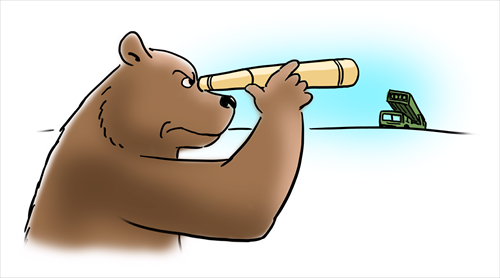
Illustration: Liu Rui/GT
The US and South Korea agreed to start the deployment of a US missile defense system in South Korea in 2017. Both sides officially claim that the anti-missile system THAAD (Terminal High-Altitude Area Defense) is designed for the protection of US allies in the region from possible ballistic missile attack from North Korea. How does this decision affect regional security? Will it stabilize the situation in Northeast Asia and beyond?
According to official statements, the decision to deploy missile defense in the region was a reaction to a number of North Korean tests. On January 6 North Korea tested a nuclear weapon, then launched a missile on February 6 and conducted some more launches in the last few months.
The Russian Ministry of Foreign Affairs reacted negatively, declaring that this policy runs counter to international legal norms and should be denounced. These actions are detrimental to the security of all regional states including North Korea itself. China did not approve of Pyongyang's tests either.
However, the truth of the matter is that the North Korean nuclear program is just a good pretext for the deployment of THAAD in South Korea, which is not only intended to defend against North Korea. It has several other objectives.
The US missile defense system is a multilayered one. It comprises GBI (Ground-Based Interceptors), the ships carrying the Aegis system with SM-3 missiles and Patriot-3 complexes. US submarines equipped with 500 nuclear warheads and deployed in the Pacific will need only 10-15 minutes to reach Chinese territory.
The THAAD system has a radar produced by Raytheon which is capable of detecting targets at the distance of 1,000 kilometers, covering both Chinese and Russian territories. The ships possessing the Aegis system are mobile and can move to any spot of the region.
Chinese nuclear potential is much lower compared to the US and China does not have MIRV (Multiple independently targetable reentry vehicle) and as developed early warning systems as the US. Chinese strategic nuclear forces are vulnerable to a US first strike while the US will have an opportunity to diminish the Chinese second strike capability. Thus, the missile defense should be regarded as an integral part of the US rebalancing strategy aimed at containing China.
Another important point has to do with US allies like Japan and South Korea. By building missile defense in the region, the US uses them not only as a shield against North Korean missiles, but it also tries to pull both countries into its grand strategy to deter China in the mid-term perspectives and possibly Russia in long-term ones. Moreover, this cutting-edge missile defense is in an ongoing process of being updated. This program is very profitable for the US military industrial complex. For example, one THAAD complex costs about $1.25 billion.
The US missile defense should be examined in a broader context of the regional and global security. It is advisable to look at how events have been evolving over past years. Under former president George W. Bush, the US abandoned the Anti-Ballistic Missile Treaty of 1972 that tied hands and paved the way to building missile defense. After that, the US leadership made a decision to build regional missile defense in Europe and Northeast Asia. If these two regional segments are linked, they will surround both Russia and China. As far as China is concerned, this is a part and parcel of the US pivot to the Asia-Pacific strategy.
Finally, the deployment of the US missile defense in South Korea is aimed at the strengthening of US dominance in the region and beyond it at the expense of both Russia's and China's security. Under these circumstances, both China and Russia will have to take reply measures. As a result, the US missile defense is not likely to bring stability but will increase unpredictability and trigger an arms race and more tension in the region and beyond.
What can be done to avoid this scenario? First, North Korea should stop its nuclear and missile testing and begin to comply with the UN Security Council resolutions. At the same time, the US and its allies should reject a regime change policy aimed at North Korea and avoid provocative military exercises aimed at causing fear in that country.
Second, the US, Japan and South Korea should start negotiations with China and Russia to address concerns about missile defense before the process becomes irreversible. Third, it is indispensable to resume the Six-Party Talks on North Korea. These measures can give us a chance to prevent a situation where the only way out is through an opponent.
The author is Vice-Rector of Research, Moscow-based Diplomatic Academy. opinion@globaltimes.com.cn
